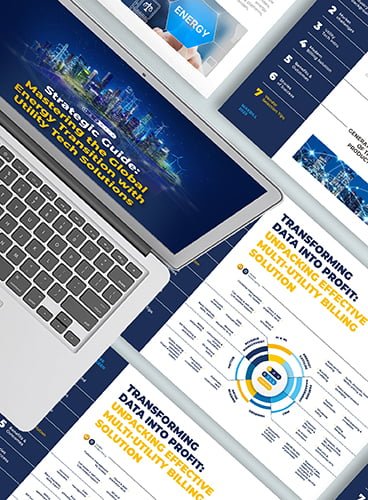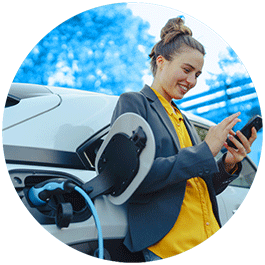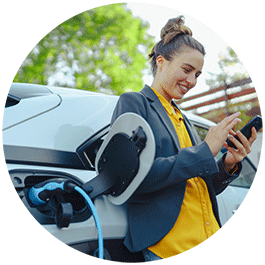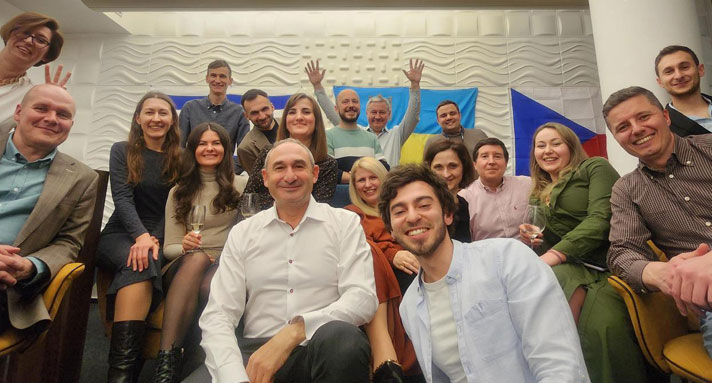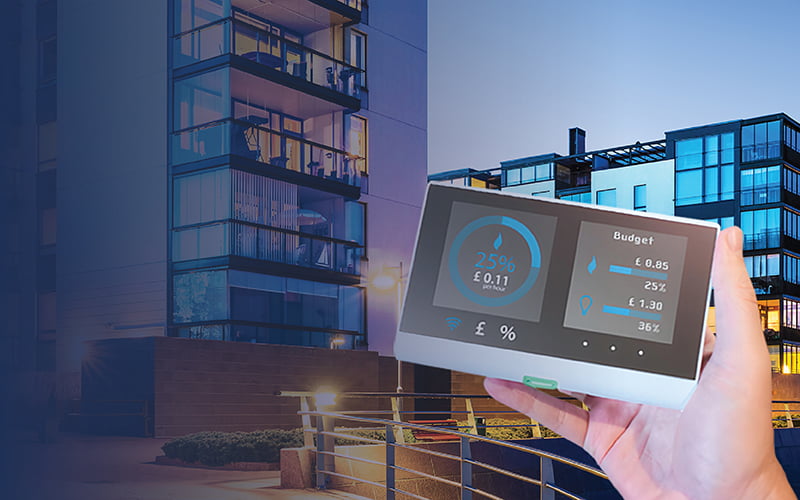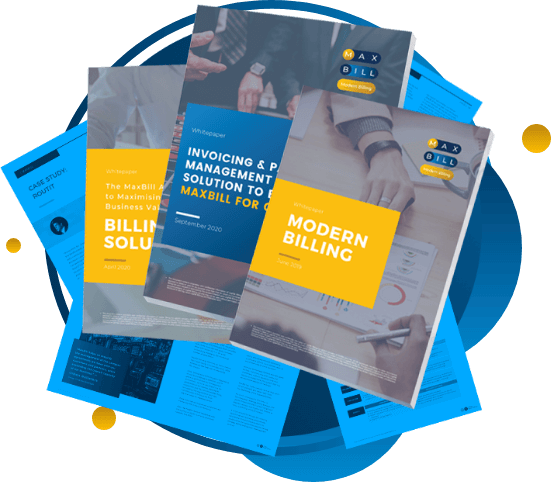Update: May 21, 2025
The affordability crisis in the sector made a customer experience management software designed for utilities even more relevant. This means that customers need even more help.
As one of the panellists of the energy and utility customer service discussion stated:
“We are seen as having not invested in infrastructure, paying fat cat salaries, and giving dividends out to shareholders when people are struggling. We are genuinely trying to do the right thing, but it’s tough.”
Can utilities do better with customer experience? Absolutely!
It’s not only about vulnerability and affordability. Some customers are tech-savvy and need no personal customer interaction but self-service. Therefore, utilities need to combine solutions for all types of customer profiles.
In this article, we’ll cover what makes good customer service today for utilities and how to get things moving if your organisation is stuck with customer engagement.
Key Takeaways
- The innovative customer service includes a holistic customer view, automation of unique CSRs’ processes, integrations with call center systems, advanced search, AI and ML models.
- MaxBill’s customer experience management software, designed for utilities, encompasses 8 core modules, from CRM to partner management and reconciliation.
- MaxCare is an all-inclusive web-based CRM tool designed to empower service providers to efficiently manage customer business processes.
- MaxBill’s built-in Business Process Management (BPM) engine automates core operations, incl. management of change, problems, service level, and configuration.
- MaxBill’s CRM solution empowers businesses to cultivate authentic relationships with their end-customers across various communication channels.
- AI-driven portals deliver another level of personalised interactions and reduce the workload of call centres.
- MaxBill ML helps identify at-risk customers, and AI prediction generates recommendations for each customer individually.
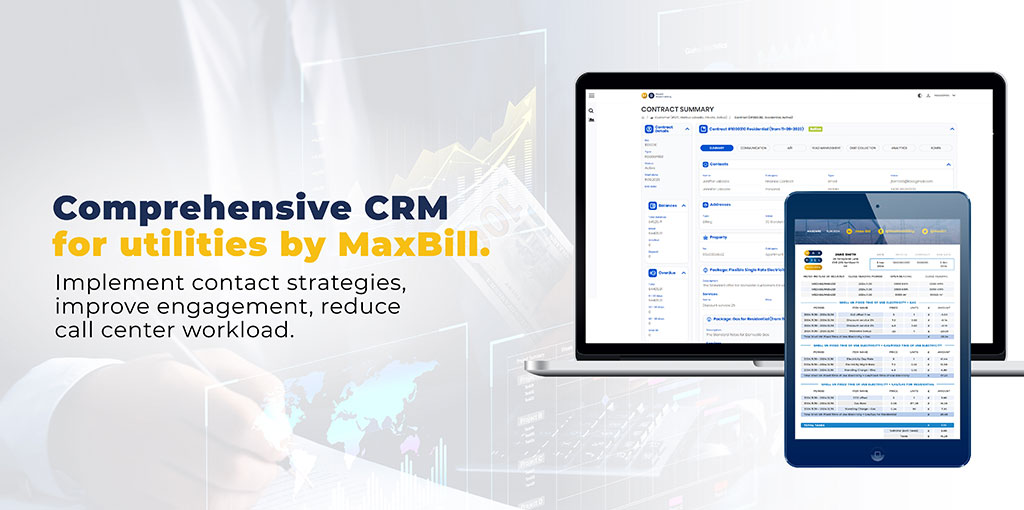
Key elements of customer experience management

The modern utility customer experience reflects the service model inside the organisation. Under the conditions of the energy transition, the conventional energy system is evolving towards new service models. They require the development of distinct capabilities in customer service to effectively address the changing demands and requirements of customers and the utilities market.
Such capabilities should contain, but not be limited to, the following characteristics:
- Full customer view: A comprehensive view of all customer-related information and activities, including general contact details, specific customer information, offerings, packages, services, billing preferences, invoices, receipts, financial status, and profile. This allows for a deep understanding of each customer’s needs and preferences.
- Workflow support: Workflow support that allows for the customisation and automation of unique customer service representative (CSR) processes and tasks based on built-in business logic. This ensures efficient and consistent handling of customer requests and inquiries.
- CRM processes: Capability to manage customer relationship management processes, including customer segmentation and profiling, campaigns, lead management, sales processes, and quotation. This enables targeted marketing and sales efforts to cater to specific customer segments.
- Call center integration: Integration with call centre systems, including user task dashboard, diary notes, communication history, integration with computer-telephony integration (CTI) and interactive voice response (IVR) systems. This provides a seamless and efficient customer-centric experiences, with easy access to relevant customer information and streamlined communication channels.
- Multi-channel communication: Support for various communication channels from a single system, including SMS, mail, email, and social networks. This enables companies to interact with customers through their preferred channels, enhancing convenience and responsiveness.
- Advanced search: Embedded advanced search functionality that allows for easy retrieval of customer data. This ensures quick and accurate access to customer information, improving response times and overall customer service efficiency.
- AI and Machine Learning: These advancements enable utilities to analyse customer data and predict behaviours, allowing them to proactively identify customers who are at risk of churn. By understanding customer patterns and preferences, utilities can take proactive measures to retain their customers.
By having these capabilities in your customer relationship management system, you can effectively focus on meeting customer needs, providing personalised experiences, and building strong relationships with your customers.
Integral to becoming customer-centric in utility is the strategic implementation of appropriate technology that enables it.
MaxBill customer experience management software designed for utilities
MaxBill’s customer experience management software, designed for utilities, encompasses such modules as CRM, partner management, order management, resource management (e.g., switches, IP, meters, and lines), service configuration, provisioning, accounts receivable, and cash collections.
These functionalities seamlessly integrate within a unified web front-end framework, streamlining and optimising business processes.
The system consists of three key functionalities:
The MaxCare Tool
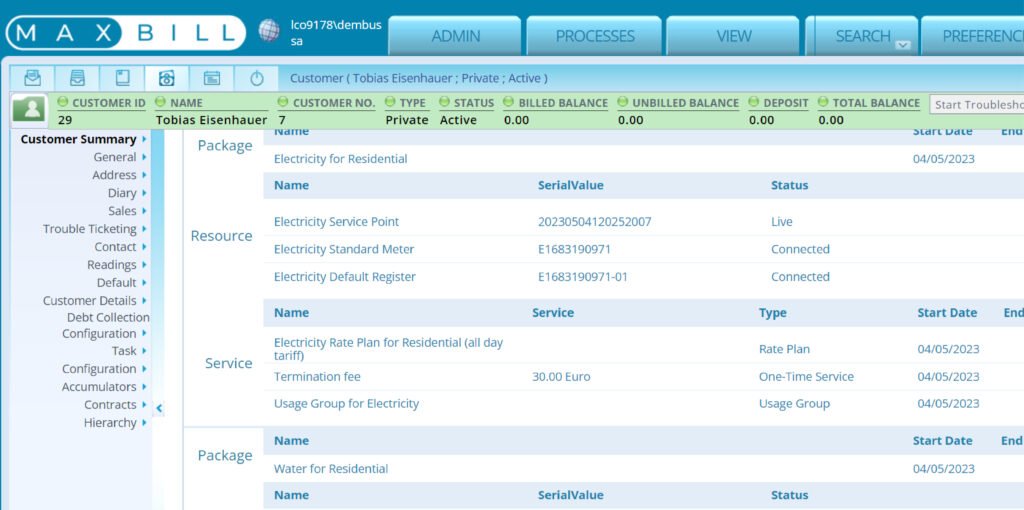
MaxCare is an all-inclusive web-based CRM tool designed to empower service providers to efficiently maintain and manage customer business processes. With its comprehensive capabilities, MaxCare allows for centralised control and monitoring of such processes throughout the customer lifecycle.
The internal system seamlessly presents a meticulously detailed customer information display. By providing CSRs with a panoramic view of every customer account, they gain access to a wealth of invaluable insights. Our system encompasses a vast array of customer data, including:
- Comprehensive contact details and specific customer information.
- A comprehensive overview of offerings, packages, and services.
- Convenient access to billing preferences, invoices, receipts, financial status, and profiles.
- Streamlined handling of multiple hierarchies for corporate and dealer compensation and discounting.
- Tailored workflow support, aligning with unique CSR processes and tasks driven by our built-in business logic.
- An all-encompassing customer profile, ensuring seamless management of their services.
Advanced task management becomes possible with a workflow mechanism integrated into the system, ensuring efficient resolutions and effective escalation procedures. CSRs are equipped with the necessary instruments to deliver exceptional customer support and handle complex tasks effortlessly.
CRM software for utilities
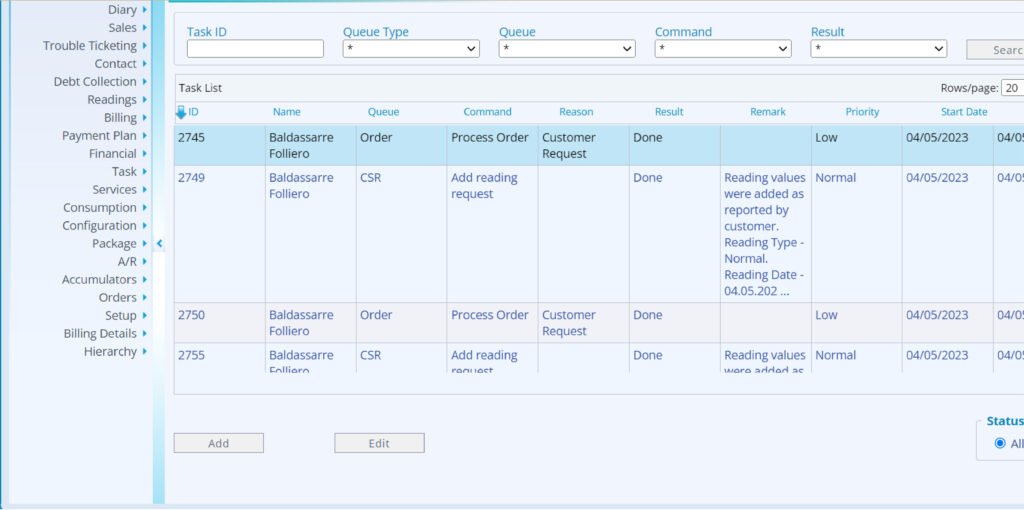
Our customer experience management software designed for utilities streamlines crucial business processes to enhance your operations:
- Customer segmentation and profiling: Effectively categorise and analyse customer data to gain valuable insights into their preferences and behaviours, enabling targeted marketing strategies.
- Campaign management: Seamlessly orchestrate and track marketing campaigns, ensuring personalised and engaging interactions with customers.
- Lead management, sales processes, and quotations: Optimise your sales pipeline by efficiently managing leads, tracking sales processes, and generating accurate quotations to close deals swiftly.
Moreover, our system incorporates a built-in Business Process Management (BPM) engine that automates core operations, including:
- Change management: Streamline the process of implementing changes to your products or services, ensuring smooth transitions and minimising disruptions.
- Incident and problem management: Resolve and manage customer issues promptly, minimising downtime and maximising satisfaction.
- Service level management: Set and monitor service level agreements to guarantee timely delivery and meet customer expectations consistently.
- Configuration management: Effortlessly maintain and track your product or service configurations, ensuring accuracy and facilitating efficient support.
By automating these essential processes, our CRM system enhances customer experience management, ensures timely service delivery, and fosters greater customer satisfaction and loyalty.
Customer-driven call centre components
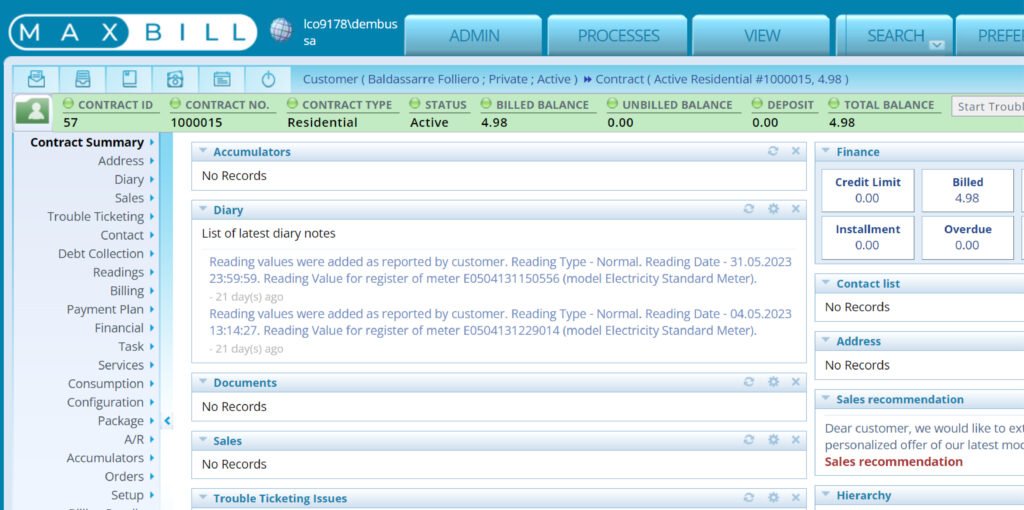
MaxBill’s CRM solution empowers businesses to cultivate authentic relationships with their end-customers across various communication channels. Here’s how our system enhances the digital customer engagement strategy:
- User task dashboard: Seamlessly manage and prioritise tasks with our intuitive dashboard, enabling efficient customer interaction and seamless workflow.
- Diary notes and communication history: Maintain a comprehensive record of customer interactions, ensuring a seamless flow of communication and enabling personalised and informed conversations.
- Integration with CTI and IVR: Seamlessly integrate our CRM solution with CTI (Computer Telephony Integration) and IVR (Interactive Voice Response) systems, enabling efficient call routing and personalised customer experiences.
- Embedded advanced search functionality: Effortlessly access customer data through our embedded advanced search functionality, saving time and ensuring quick access to vital information.
By seamlessly combining these key functionalities, MaxBill’s customer care approach enables enterprise-wide service and revenue assurance, resulting in heightened customer satisfaction, reduced churn rates, and increased profitability.
MaxBill AI-driven new-gen self-serve portal for customers
MaxBill AI self-service portal brought a new level of convenience. See, utilities have different customers. Some are tech-savvy and don’t want them to be phoned up. They are happy to communicate with utilities digitally.
Traditional self-serve portals are good at this. AI-driven ones go further and deliver another level of personalised interactions. What’s more, they reduce the workload of call centres, particularly protecting agents from abuse for mental health and morale.
We’ll outline the key advantages of AI self-service over traditional self-service:
24/7 intelligent assistance
AI chatbots are available around the clock, handling up to 83% of customer queries without human intervention. They understand context, learn from interactions, and provide instant, accurate responses, enhancing customer satisfaction and reducing support costs.
Real-time data access
Customers can view their consumption, invoices, and payment history in real-time, allowing for immediate insights and actions. This transparency leads to improved cash flow and better financial planning for both customers and providers.
Personalised user experience
The AI assistant offers tailored guidance, helping users understand contract terms, optimise energy usage, and navigate services effortlessly. This personalised approach fosters higher customer loyalty and engagement.
Seamless integration
The AI Self-Care Portal integrates with existing billing and Customer Information Systems (CIS), ensuring consistent and up-to-date information across all platforms. This integration streamlines operations and enhances the overall customer experience.
Effortless integration for your business
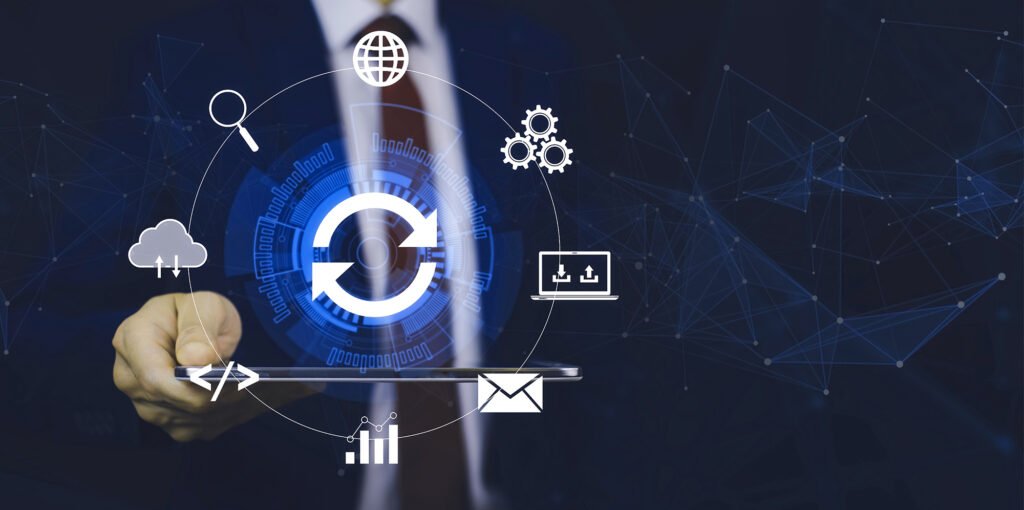
The MaxBill CRM Approach can be easily applied to the main CRM system of energy and utility suppliers. The implementation process suggests a powerful process designer that harnesses the strength of the BPMN 2.0 standard. This feature allows business and IT personnel to effortlessly comprehend and collaborate on process models.
The solution’s low-code functionality empowers IT professionals to effortlessly tailor interfaces, business logic, and integrations with third-party systems to perfectly align with the specific business needs of the customer-centric utility organisation. With ease and efficiency, an IT team can configure and customise any crucial component to optimise operations.
AI and Machine Learning for personalised CX in utility
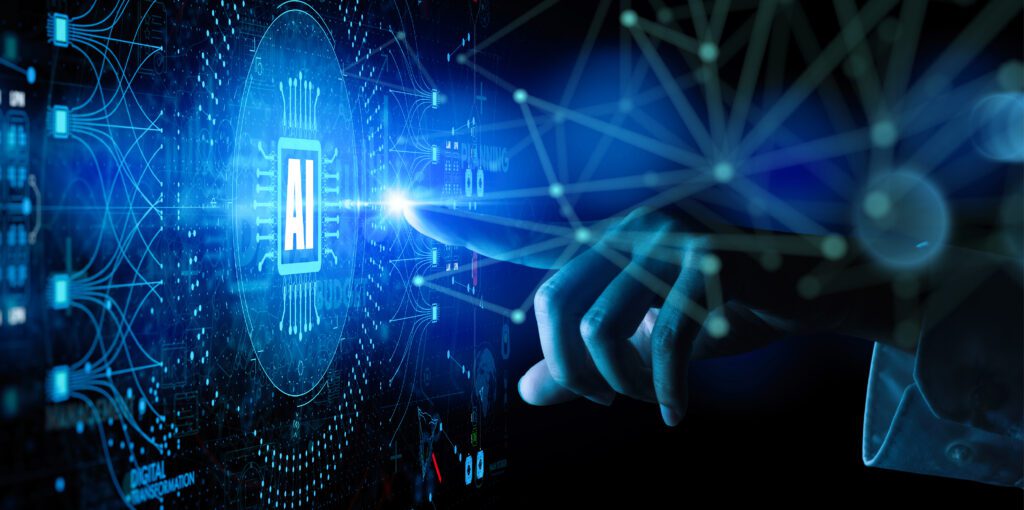
Utility customer experience management can stretch significantly thanks to AI and ML. In today’s fast-paced global markets, digitalisation, and the era of customer-centric transformation in utility, traditional general-purpose CRM applications fall short of addressing the dynamic needs of businesses.
To achieve higher success rates in introducing new products and services, as well as to elevate customer service and satisfaction, businesses now require a new breed of CRM, one infused with the power of Machine Learning (ML) and Artificial Intelligence in energy and utilities.
MaxBill’s approach to customer relationship management suggests prediction mechanisms to reduce churn rates. Machine learning helps identify customers who are likely to leave, and AI prediction mechanisms generate recommendations for each customer individually based on their previous decisions as well as best practices for such cases.
Furthermore, these capabilities generate next-best offer suggestions, making customers even more loyal.
At MaxBill, we are dedicated to delivering top-notch customer-centric solutions in the utilities sector and enhancing the service efficiency of utility and energy companies.
Through our process-centric user experience (UX) and embedded intelligence, we simplify case classification and routing, enabling streamlined operations.
Our solution empowers service agents by providing assistance throughout case resolutions, guiding their attention towards the next crucial steps. With MaxBill, utility and energy companies can optimise their service delivery and provide superior customer experiences.
Get in touch with us and leverage MaxBill’s utility billing solutions to streamline your customer life-cycle management.

Customer experience trends in the utility 2024 – 2050
The customer experience in the utility industry will look insanely different. We’ll outline the top 8 key trends.
- Blockchain. Blockchain, when combined with IoT, enables consumers to trade and purchase energy directly from the grid, bypassing traditional energy retailers. This gives consumers access to more competitive, wholesale energy rates.
- Transformative technologies. AI and automation, not new to the utility world now, are driving personalized, seamless customer interactions, revolutionising asset management, and creating experiences that were once beyond imagination.
- Augmented reality. AR will empower customers by enabling them to self-serve simple fixes, like boiler repairs, and interact with data-rich dashboards. This will enhance their understanding of energy usage, leading to a more informed and proactive approach to managing their energy consumption.
- Auto-switching. Auto-switching, powered by AI, will evolve from its current yearly cycle to a more dynamic process by 2050. In the future, customers could automatically switch energy suppliers every 30 minutes or even every second to secure the best price. This process will be managed by intermediaries, like evolved versions of today’s switching services or super apps, which will automate the entire process.
- Innovative offerings. In their strive for relevance and profitability, utility companies may explore new opportunities by forming partnerships with other industries, including smart appliance manufacturers and tech firms. New kinds of offerings could include products like smart thermostats, lightbulbs, motion sensors, and leak detectors that enhance home safety, efficiency, and convenience.
- Consumer technology breakthrough. A prominent survey of utility executives revealed that 80% believe utilities that fail to provide the same level of personalisation and convenience as Amazon, Google, and Netflix will struggle to meet customer expectations in the next decade. Going forward, the customer experience in utilities won’t just be compared to the best in their industry, but to the best across all sectors.
- Value-added services. Value-added services could involve product bundling, combining energy, water, home maintenance, and insurance into a single tariff for added convenience. The thing is the shift to a digital economy, where platforms and ecosystems dominate, may be difficult for utilities accustomed to owning the customer relationship, as they might struggle with the idea of partnering with others and potentially ceding control of this relationship.
- Innovations in the EV charging business. It’s clear as day that the more people use EVs, the more electricity will be consumed. And we’ll just cite “… that prompts people to become much more engaged in how they think about electricity, carbon and costs. It’s a great starting point to have different conversations with customers and really build engagement in new products, like solar, energy efficiency, and different tariffs,” states Utility CEO Neal Coady from Centrica.
Top 5 customer experience management software designed for utilities
#1. MaxBill CRM software for energy and utilities – best for B2B energy suppliers and multi-utilities
The solution is tailored for utilities with complex customer bases, hierarchical, multi-layered relationships, including third parties and partners involved in a supply chain. It delivers the full spectrum of CRM for utilities, enhancing operations with AI and MLL for a personalised experience and self-service portal.
Get a glimpse into MaxBill CRM for utilities here:
#2. Apptivo CRM for utilities – best for efficient project management
With the tool, companies can manage complex sales, accounts, and service operations. The whole journey of a customer is well tracked, including consents, planning, service deliveries, and repair orders. The solution also delivers robust customer contract management under one roof and can be integrated with most third-party solutions.
#3. Sage CRM – best for integrated financial management
Small and medium-sized companies will find key CRM tools for marketing, sales, as well as reporting and integrations. The solution comes with a great level of workflow automation, which reduces workload for customer-facing teams. Utility CFOs will find real-time analytics insightful into a corporate business performance. Sales teams can increase KPIs with sales productivity tracking
#4. Cronberry – best for comms with customers
Communication with utility customers is a huge part of the deal. The solution delivers marketing automation to help create personalised customer interactions. The system tracks customer behaviour for a better understanding the customer journey and automates communication channels. This can be a great combo with messenger apps or other channels.
#5. Inventia – best for real-time grievance management
Customer service teams can use efficient customer interaction tracking across meters, payments, and charging to cater better to customer preferences. Customers can easily submit service requests, and teams – respond quickly and improve service due to service request tracking.
Utility customer engagement FAQ
What is CRM in utility?
CRM in utility is a customer relationship management system that includes CIS for utilities to help companies run complex customer management operations effectively, keeping ‘low-cost serve’ approach and meantime increasing the quality of customer interactions.
What is utility management software?
Utility management software refers to SaaS solution designed to help utilities manage their operations, clients, billing, assets, security and compliance. The ultimate utility management software eliminates siloed data across departments and delivers that level of automation, empowering growth and scalability.
What software is used for customer management?
Software used for customer management includes centralised data center with a holistic customer view and complete history, multichannel support, meter data integration, automated charging and payments, customer segmentation, analytics and reporting, AI-driven retention strategies, forecasts, and planning.
What is customer experience software?
Customer experience software is designed to improve the customer experience of a client base. This is achieved via self-serve portals, responsive and helpful responsive troubleshooting, dynamic pricing that helps save on energy usage, comms channels and service digitalisation.
